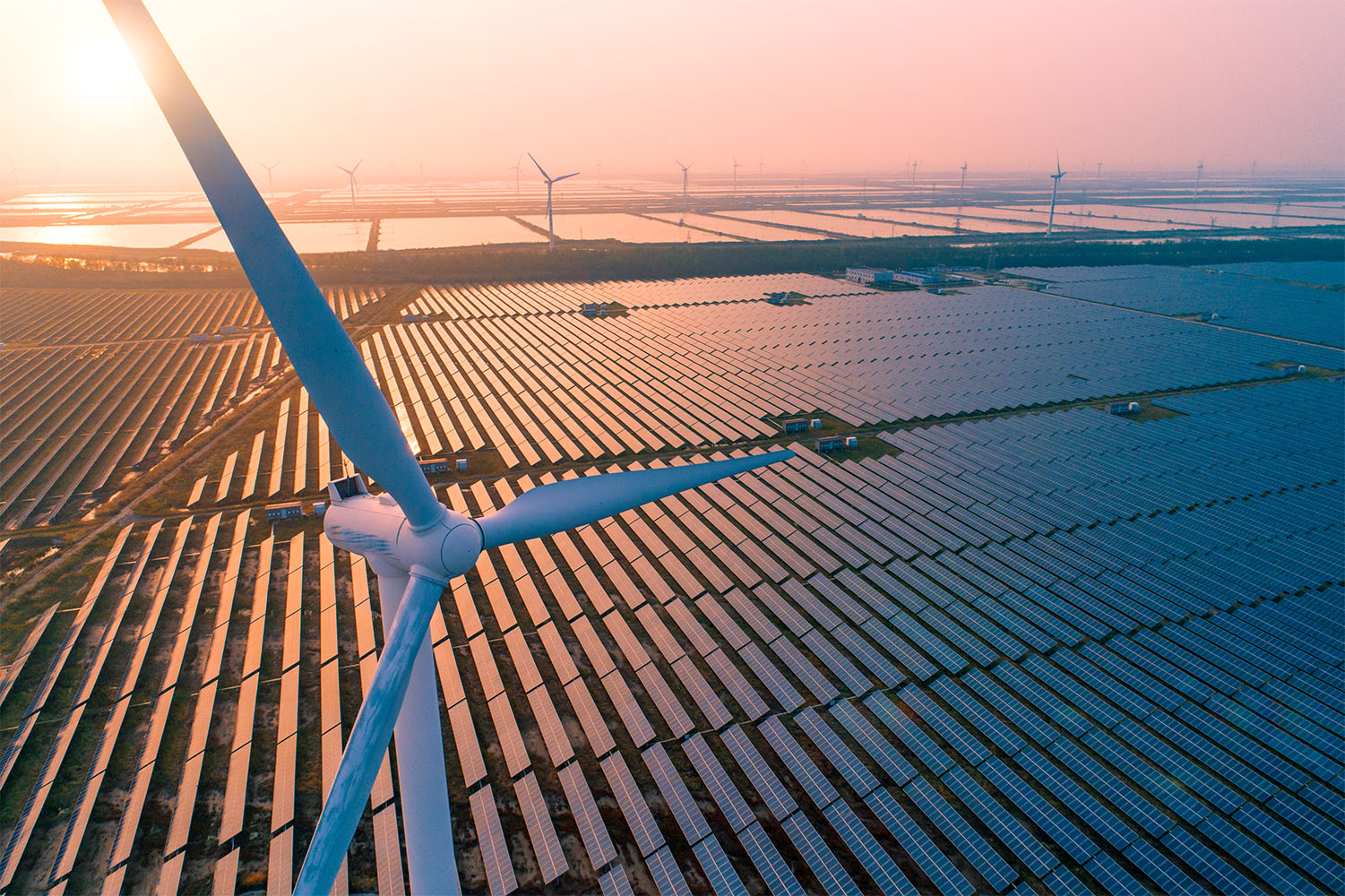The Energy Transition | Global offshore wind capacity increases by more than a fifth in one year
Published on 25th June 2024
Welcome to our top picks of the latest energy regulatory and market developments in the UK's transition to net zero.

This week we look at recent growth in global and domestic offshore wind capacity, updates to the sixth allocation round for the Contracts for Difference scheme, the latest forecasting for the UK offshore energy sector, and more.
Global offshore wind capacity increases by more than a fifth over the last year
A new report published by RenewableUK, a renewable energy trade association, shows that global offshore wind capacity has increased by 21% over the last 12 months from 65.1GW to 75GW. This increase represents a rise in generation capacity which is equivalent to powering 14 million homes in the UK for a whole year.
Within this 75GW of global operational capacity, the UK is the second largest generator, contributing 14.7GW to the total. China retains the largest offshore wind capacity of any country, with 36.7GW of generation capacity.
RenewableUK's Chief Executive, Dan McGrail, stated that the report shows that the UK is "maintaining its place as a global leader in an intensely competitive international market".
The report projects a fourfold increase in capacity by the end of 2030, to a global figure of around 277GW. This is based on the global project pipeline consisting of more than 1,500 projects across 41 countries. China has the largest pipeline with 227GW in development, followed by the UK with a pipeline of 96GW across 122 projects.
The report notes the importance of the role of the UK planning system to achieve this projected growth, stating that 15.8GW of potential offshore wind capacity is currently awaiting a decision within the UK planning system. RenewableUK has called for an overhaul of the planning system to maximise the UK's offshore wind capacity and highlighted its potential to contribute to increased energy security and lower energy bills for consumers. As we previously reported, an energy generation mix dominated by offshore wind contributions could potentially save consumers approximately £68 each per year.
CfD Allocation Round 6 to proceed with longest timeline as ESO confirms receipt of appeals
National Grid Electricity System Operator (ESO) has announced that at least one appeal has been made to Ofgem by non-qualifying applicants in the sixth allocation round (AR6) of the Contracts for Difference (CfD) scheme. As a result, AR6 will progress in line with the longest allocation timeline which means that successful applicants will now be required to submit their sealed bids between 5-9 of August 2024. The ESO will notify applicants of successful projects by 3-4 September 2024, rather than in July as had previously been hoped. Full details of the allocation timeline can be found via the CfD portal.
The ESO informed applicants of the results of their qualification review on 11 June 2024, at which point applicants deemed to be "non-qualifying" were given until 18 June 2024 to submit an appeal to Ofgem. Ofgem has not confirmed the number of appeals, but the ESO will now provide any necessary input before 26 June 2024. Following this, Ofgem will then make a decision on the merit of any appeals between 27 June and 24 July 2024.
AR6 makes available £1,025 billion in annual subsidies, with £800 million allocated in the pot three auction for offshore wind development, after no offshore wind projects were submitted to last year's auctions due to a rise in supply chain costs and a comparatively low strike price. The administrative strike price for offshore wind in AR6 has been raised from £44/MWh to £73/MWh. The remaining funding will be split between the pot one auction for mature technologies such as onshore wind and solar, and the pot two auction for less-established modes of generation, including floating offshore wind, tidal stream and geothermal projects. The budget for each will be £120 million and £105 million, respectively.
Offshore Energies UK projects 50% job growth and capital investment in UK offshore energy by 2030
Trade association Offshore Energies UK (OEUK) has launched the 2024 edition of its Economy & People Report which outlines the key opportunities and challenges facing the UK offshore energy sector in context of net zero targets. The report provides insights across oil & gas, hydrogen, carbon capture and storage (CCS), and offshore wind technologies. It also details the role that supportive economic policy can play in encouraging growth within these sectors.
Key takeaways from the report include the following:
- Capital investment and the job footprint in the UK offshore energy sector could increase by over 50% (to a yearly sum of £20 billion and 225,000 jobs by the early 2030s) if effective, faciliatory government policy is implemented.
- The first CCS cluster projects are nearing investment decisions, and there remains a need for clarity and consistency on long-term government support.
- Continued market reform, a faster consenting process, and accelerated grid access are required if the UK is to hit the government's target of 50GW of offshore wind capacity by 2030.
- The industry must be proactive in attracting and retaining top talent, particularly to maximise cross-sector opportunities. The report highlights existing and proposed approaches to improving this, including skills passports, broader energy sector skills summits, and energy apprenticeship schemes.
David Whitehouse, CEO of OEUK, said the report "shows that the offshore industry could invest £450bn in UK energy by 2040," and that "with supportive policy, the industry can deliver enduring economic value, scale up our supply chain capacity, sustain skilled jobs, [and] deliver energy security, all while delivering on our climate goals.”
Concerns over impact of EU carbon border tax on domestic renewables market
The EU Taxation and Customs Union has recently hosted a webinar outlining the current status of the European Union's Carbon Border Adjustment Mechanism (CBAM), which was announced last September (as reported here) and is due to take effect in 2026. The webinar covered a number of CBAM's technical implications, including reporting obligations, and was delivered in response to increasing industry concerns over CBAM's impact on the UK renewable energy export market.
Part of the European Green Deal, CBAM's stated aim is to put a "fair price on the carbon emitted during the production of carbon intensive goods that are entering the EU". This mechanism has the potential to penalise UK renewable exports, as it provides that a CO2 emissions fee will be placed on electricity imports from nations that do not have equal CO2 pricing policies. While there are exemptions to such fees, meeting the requirements could be difficult, leaving experts uncertain on the impact that it could have on UK renewable energy revenues.
Analysis published in October 2023 by Energy UK revealed that UK companies exporting to the continent could be paying up to £500 million a year in carbon taxes to the EU as a result of the CBAM. Deputy Director of Energy UK, Adam Berman, stated that the UK's "falling and volatile domestic carbon price threatens to deter clean investment at the very moment we need it most and could end up costing British companies billions of pounds simply for trading with their largest export market".
DNV reports on the potential uses of AI in advancing energy systems
Independent energy expert and risk management firm DNV has published its "New Power Systems" report, which states that by 2050, global electricity demand will have doubled, with the expansion in data centres for artificial intelligence (AI) functions contributing to this surge. The report says that the next steps in the energy transition will necessitate expanding the grid, alleviating current grid congestion problems, and catering for the increase in demand through innovative business models. The report also states that AI has the potential to significantly accelerate the energy transition and make meeting increased demands both achievable and affordable.
The report projects that the use of AI will be groundbreaking for transmission and distribution system operators. Although already in use for grid planning, line routing and transformer placement, generative AI also has potential applications in grid visualisation, allowing for pioneering designs and mapping of "what-if" scenarios. AI could also enhance integration of energy storage with the grid by live adjusting storage parameters, increasing both efficiency and reliability. Energy loss could also be minimised through AI's ability to optimise battery charge and discharge cycles which will prolong the life of the battery system.
The report also states that AI could better match energy supply with demand, increase grid integration and maximise the value of renewable energy. AI can create precise day-ahead forecasts of the output of solar or wind power plants, which would in turn inform effective grid management and storage planning. These use cases could greatly improve the efficiency of renewable generation. Beyond these applications, AI could also stimulate materials research for energy storage by accurately predicting material properties, predicting maintenance or replacement needs for components within the grid, and solving grid optimisation issues with much greater speed than is currently possible.
Before deploying AI into the network however, the report acknowledges that associated risks must be considered and catered for. These risks include variables in the performance of the AI, the agency of the system and the interaction between AI and the system.
The DNV report states that "AI is already solving challenges previously thought to be impossible" and "provided (…) that risks are managed to an acceptable level, AI presents opportunities for advancing energy systems towards greater efficiency and sustainability."
This article was written with the assistance of Khushal Thobhani, Luke Hopper, Hannah Bradley, Jessica Sawford and Charlotte D'Arcy, trainee solicitors.




